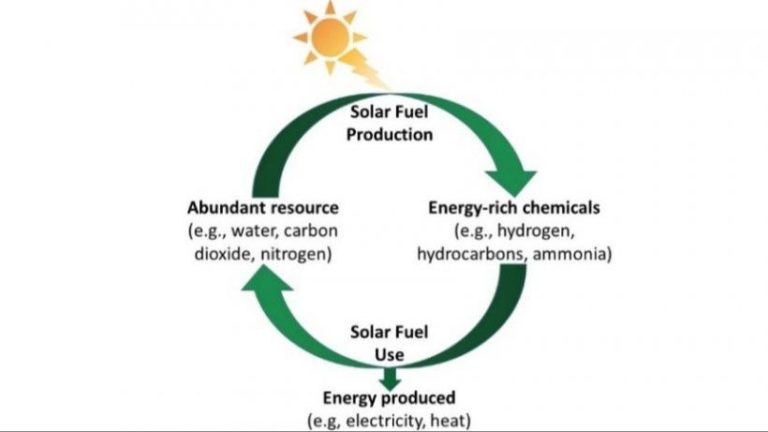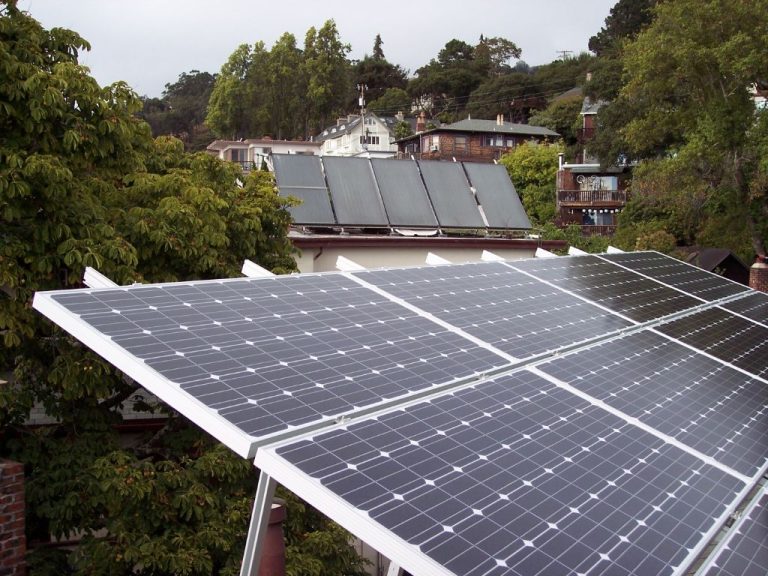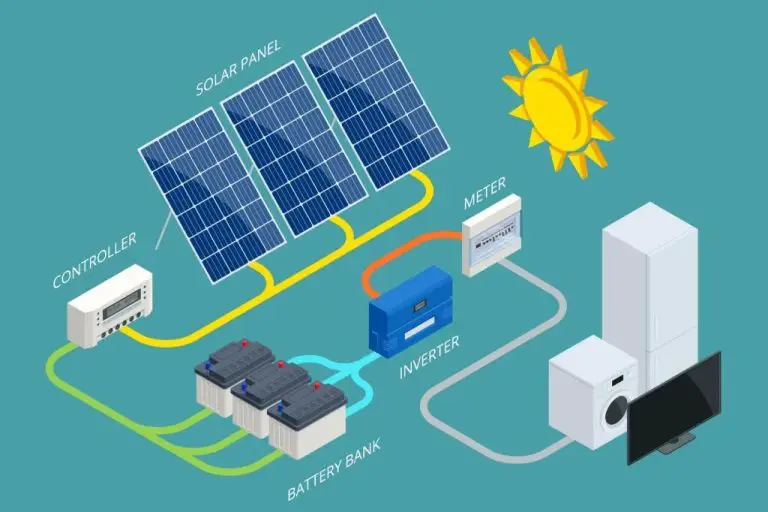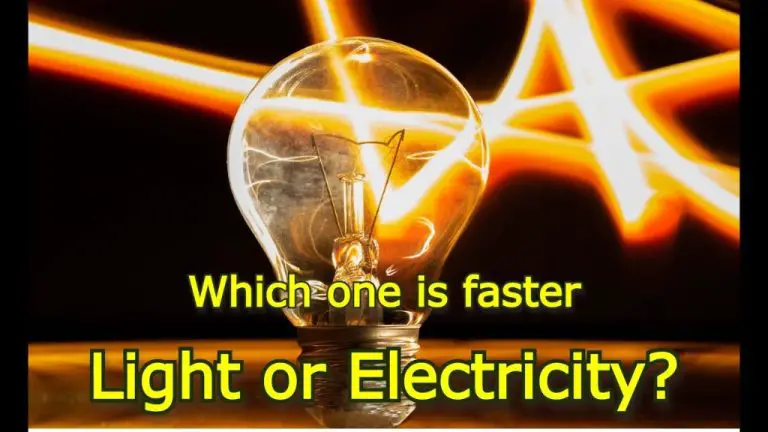What Is The Overview Of Solar Power System?
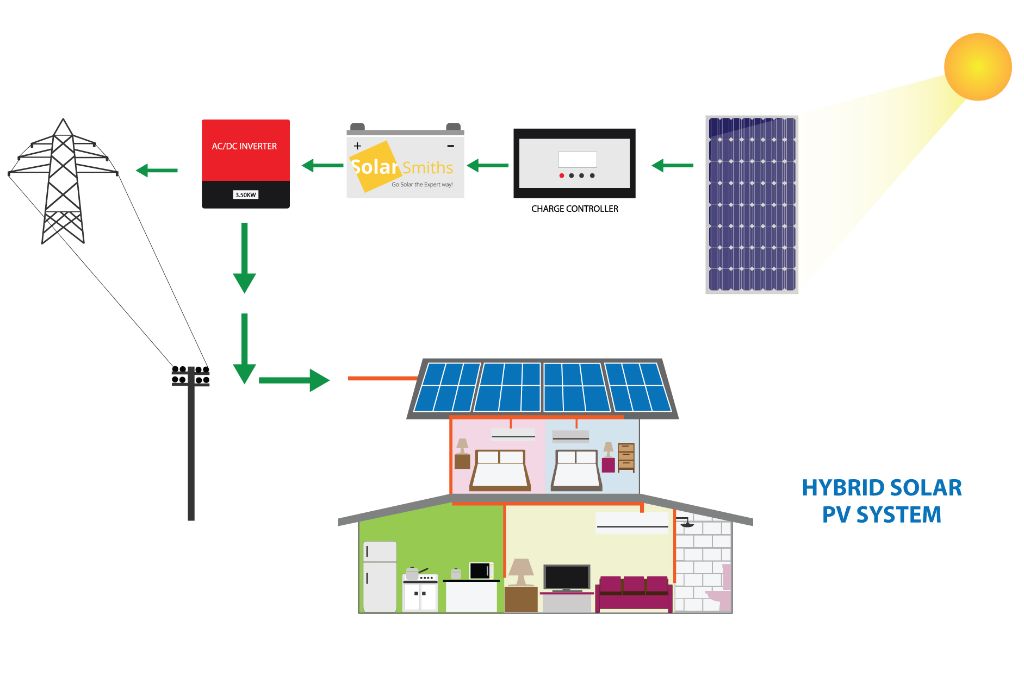
Solar power is the conversion of energy from sunlight into electricity through the use of photovoltaic (PV) solar panels. PV solar panels are made up of solar cells containing photovoltaic materials that absorb photons from sunlight and release electrons, generating an electric current.
The development of solar power technology began in the 1860s with the discovery of the photovoltaic effect by French physicist Edmond Becquerel. The first solar cell capable of converting enough sunlight into power to run electrical equipment was created in 1883 by Charles Fritts. However, solar power did not become widely used until the space industry adopted PV solar panels in the 1950s to provide power aboard spacecraft. The growth of the solar power industry accelerated in the late 1990s and early 2000s with improvements in solar panel efficiency and cost reductions.
Solar power has become an important renewable energy source due to several benefits. It produces no air pollution or carbon emissions during operation, allowing it to help mitigate climate change. Solar energy is abundant and inexhaustible. PV solar panels can be installed on homes, businesses, and at utility-scale to provide distributed power generation. The modular nature of solar panels makes them flexible and scalable. With solar panel costs dropping dramatically in recent decades, solar power is becoming increasingly affordable and accessible.
How Solar Panels Work
Solar panels work through the photovoltaic effect, which is the process of converting sunlight into electricity. When sunlight hits the solar cells inside a solar panel, it knocks electrons loose from the atoms in the semiconducting material, allowing electrons to flow and produce electricity. The key components in a solar cell are the photovoltaic layer made of a semiconducting material like silicon, electrodes on the front and back of the cell, and an anti-reflective coating.
The photovoltaic layer, made of materials like crystalline silicon, is where the photovoltaic effect takes place. When a photon from sunlight hits the solar cell, its energy knocks an electron loose, allowing it to flow freely. The front electrode gathers the freed electrons and routes them into an external circuit to do work, producing electricity. On the back electrode, extra electrons are waiting to fill electron “holes” in the material. This movement of electrons from the front to the back creates an electric current.
Solar panels contain many small solar cells wired together to produce more electricity. The cells must have an anti-reflective coating to absorb as much sunlight as possible. Alone, a single solar cell produces only about 1-2 watts of power. But many cells combined in a solar panel can produce over 300 watts of usable electricity.
Sources:
https://science.howstuffworks.com/environmental/energy/solar-cell.htm
Types of Solar Panels
There are a few main types of solar panels used in solar energy systems today:
Monocrystalline Solar Panels
Monocrystalline solar panels are made from silicon ingots, which are cylindrical blocks formed by melting high-purity silicon and re-solidifying it into a solid single crystal structure. Cells cut from a single crystal ingot have a uniform look and color (typically blue or black) [1]. These solar panels have the highest efficiency rates since there are no defects or impurities.
Polycrystalline Solar Panels
Polycrystalline solar panels are made from molten silicon cast into square molds, which results in a more faceted and speckled blue color as the silicon cools into many crystalline regions. The random crystal boundaries reduce the efficiency compared to monocrystalline panels. However, polycrystalline solar panels tend to be cheaper due to the easier manufacturing process [1].
Thin-Film Solar Panels
Thin-film solar panels use amorphous silicon or non-silicon materials such as cadmium telluride (CdTe). They have a flexible appearance and can be integrated more seamlessly into structures. However, they tend to have lower efficiency ratings than crystalline silicon panels and degrade faster [2].
Hybrid Solar Panels
Some solar panel manufacturers are producing hybrid solar panels that combine crystalline silicon and thin-film materials to get the best of both technologies. For example, SunPower’s X-series panels have a thin cadmium-telluride layer on top of monocrystalline silicon cells to capture additional light.
Solar Panel System Components
Solar panel systems are comprised of several key components that work together to convert sunlight into usable electricity. The main components include:
Inverters
Inverters convert the direct current (DC) electricity generated by solar panels into alternating current (AC) electricity that can be used in homes and buildings. Inverters are a crucial part of any solar panel system.
Batteries
Batteries store excess electricity generated during the day for use at night or during power outages. They allow solar panel systems to provide electricity even when the sun isn’t shining. Batteries are more commonly used in off-grid solar systems.
Mounting Systems
Mounting systems securely attach solar panels to rooftops, ground mounts, or other structures. They ensure panels are oriented properly for maximum sunlight capture. Mounting systems must withstand all weather conditions over decades.
Wiring
Electrical wiring connects all the solar system components together into a working system. Proper wiring is critical for safely and efficiently transmitting power from the solar panels to appliances and devices.
Residential Solar Systems
Residential solar systems are designed to supply solar power to homes. The main components of a residential solar system include solar panels, inverters, racking, and other electrical equipment.
The average cost of a residential solar system ranges from $3,500 to $16,000 according to https://www.investopedia.com/articles/mortgages-real-estate/10/solar-power-home.asp. Costs vary based on the size of the system, type of panels, permitting fees, and installation costs. Many homeowners are eligible for state and federal tax incentives like the investment tax credit (ITC) that can reduce costs by 26%.
Net metering programs allow residential solar customers to get credit for excess electricity sent back to the grid. This helps offset the cost of power drawn from the grid when solar panels aren’t producing enough energy. Net metering makes it more economical for homeowners to install solar.
Commercial Solar Systems
Commercial solar systems are larger scale installations designed to offset the energy usage of businesses and commercial facilities. The size of commercial solar power systems can range from 10 kW to over 1 megawatt (MW), depending on the energy needs and available space of the business.
According to Ecowatch, the average commercial solar system is sized around 200 kW and requires about 1,000 solar panels. At 15% panel efficiency, a 200 kW system can generate over 250,000 kWh annually. For small to mid-size businesses, commercial solar offsets 20% to 40% of their total energy usage.
The cost of a commercial solar system depends on the size but generally ranges from $1 to $3 per watt. A 50 kW system would cost around $100,000 while a 500 kW system could cost over $1 million. There are federal incentives like the Investment Tax Credit which offers a 26% tax credit on installed costs. Many utilities also offer rebates up to $500,000 through the Commercial Solar Incentive Program to help offset costs.
Commercial solar can yield a return on investment within 5-7 years through energy savings. The system lifespan is around 25-30 years, providing decades of free electricity after payoff. This makes commercial solar a smart long-term investment for businesses looking to go green and reduce energy expenses.
Utility-Scale Solar Power
Utility-scale solar power refers to large solar photovoltaic (PV) plants that generate electricity for sale to utilities or large industrial customers. These plants can range from 10 megawatts (MW) to over 1 gigawatt (GW) in capacity. Some of the largest solar farms in the United States include the 579 MW Solar Star project in California, the 550 MW Topaz Solar Farm in California, and the 290 MW Agua Caliente Solar Project in Arizona [1].
The cost of utility-scale solar power has declined dramatically in the last decade, from around 25 cents per kilowatt-hour in 2009 to 4-6 cents per kilowatt-hour today. This cost reduction has made solar power competitive with fossil fuel electricity generation in many parts of the country [2]. The main drivers behind the lower costs have been economies of scale, improvements in solar panel efficiency, and streamlined permitting and siting processes.
The capacity of utility-scale solar power is expected to expand significantly to meet renewable energy goals in many states and address the climate change crisis. Over 950 gigawatts of new utility-scale solar projects are currently proposed or under development across the United States, particularly in sunny states like California, Texas, and Florida [3].
Solar Panel Efficiency
The efficiency of solar panels is a measure of how much sunlight energy is converted into electricity. There are several factors that influence solar panel efficiency:
Factors Affecting Efficiency
The main factors that affect solar panel efficiency include:
- Solar cell material – Different semiconductor materials have different light absorption properties and electron transition efficiencies. Monocrystalline silicon is the most efficient at 15-20%.
- Temperature – Solar cells become less efficient as temperature increases. This is why cooling systems are often used for solar arrays in hot climates.
- Solar intensity – Panels are more efficient in direct sunlight than cloudy or hazy conditions which diffuse the sunlight.
- Angle of light – The angle of sunlight striking the panel affects efficiency. Tracking systems that follow the sun’s path maximize efficiency.
- Panel age – Efficiency slowly decreases over time as materials degrade.
Technology Improvements
Advances in materials and solar cell technology continue to increase the efficiency of solar panels. Some key improvements include:
- Thinner silicon wafers minimize electrical losses.
- Anti-reflective coatings maximize light absorption.
- Multi-junction cells with layered semiconductors capture more of the light spectrum.
- Quantum dot technology enhances light absorption and electron transfer.
- Perovskite cells offer high efficiency potential beyond traditional silicon.
With ongoing research and development, average commercial panel efficiencies are steadily rising toward 30% or greater.
Cost of Solar Power
The cost of a solar power system includes the upfront costs of equipment and installation, as well as ongoing operation and maintenance.
According to Solar Reviews, the average cost for a residential solar system is $2.64 per watt, with an average system size of 6 kW for a 1,500 square foot home. This puts the total system cost at around $15,840 before incentives [1].
However, costs can vary significantly based on system size, local labor and permit costs, and equipment choices. Larger commercial and utility-scale systems can achieve lower per watt costs through economies of scale.
Once installed, solar panels have very low maintenance needs and last 25-30 years. Annual operations and maintenance costs are estimated at $20-$50 per kW of solar capacity [2]. Replacing inverters more regularly adds slightly to long term costs.
Compared to conventional utility electricity at $.12/kWh, solar power costs are recouped over the system lifetime. The levelized cost of solar electricity ranges from 4 to 7 cents per kWh for residential systems after tax credits [3]. This makes solar very competitive without even factoring environmental benefits.
Future of Solar Energy
The future of solar energy looks very bright, with an enormous amount of projected growth as solar power costs continue to fall and technology improves. According to the National Renewable Energy Laboratory (NREL), solar energy could account for up to 40% of U.S. electricity generation by 2035 and 45% by 2050. Solar is predicted to be the fastest growing renewable energy source in the world over the next few decades. Projections show solar energy generation capacity increasing to over 5,600 gigawatts worldwide by 2050, up from about 760 gigawatts today. This source predicts total global solar generation could provide 20% or more of total worldwide electricity by 2027.
New solar technologies on the horizon are helping drive increased efficiency and lower costs. These include improvements in solar cell materials, concentrating solar power systems with storage capabilities, floating solar arrays, solartransparent windows, and more advanced grid integration and microgrid capabilities. However, challenges and limitations remain in terms of energy storage, grid infrastructure, and the intermittent nature of solar power. Widespread use of solar energy will likely require improved battery storage capabilities and new transmission infrastructure to connect solar generation with demand centers. The variability of solar power throughout the day and year also requires complementary sources or storage to provide continuous power. Overall though, the future is bright for solar to become a major pillar of the global energy mix this century.

